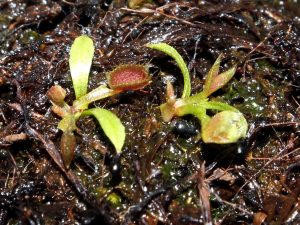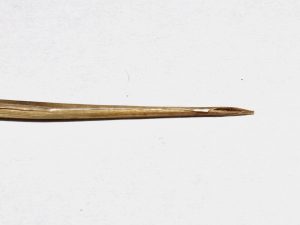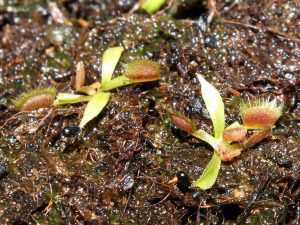How to Feed Venus Flytrap Seedlings
Feeding VFT seedlings from the beginning

Seed grown venus flytraps (Dionaea muscipula) are known as slow growers. They usually take at least a couple of years to reach maturity, which makes growing flytraps from seeds less tempting. If you start feeding the tiny little traps early, you can speed up their growth considerably. First traps are usually way too small to consume whole insects, which means they need to be fed much smaller chunks. I use the same food as with my Drosera capensis seedlings – beta fish food.
What to do about those tiny little traps?

The main problem, when it comes to feeding the young Dionaea seedlings is the size of their traps. They are way too small to eat anything larger than square millimeter. I’m using wet beta fish food, further diluted with distilled water. I grind larger chunks with toothpick, so they can fit into juvenile traps. Toothpick can be a bit too thick to fit ‘jaws’ of small sized traps, so I decided to use a sheath of my bamboo seedling. You can also sharpen the toothpick, it should do the job just as good. I am using bamboo sheath because it has oral setae on the other side, which comes handy when you have to stimulate the trap to close completely. It is hollow and can hold the fish food paste much better than toothpick.

I use scissors to make the pointy end sharper, which enables me to reach small traps easier and successfully deploy the food. Trap usually closes almost completely, but as it needs to be triggered a few more times, I brush it from both sides with the bristles. Traps usually fully close after they capture a living insect that moves inside the trap. If dead insect or in my case, fish food is used, traps need to be stimulated to start the digestion. I make two rounds brushing the traps, sometimes even more, just to be sure the traps will close. I have been quite successful in doing so.
Digestion

In most cases, traps reopen in 3 to 10 days. The more food you place inside, the longer they need to digest. There are other factors as well, such as seedling’s health, amount of light and temperature. At higher temperature and higher light level, the process speeds up considerably. A week or so after the feeding, seedlings start showing increase in growth speed, putting out numerous new traps that also get larger. The larger they get, the easier it gets to feed them and larger chunks of food they can digest. As they grow larger, their growth speed also increases, considerably!